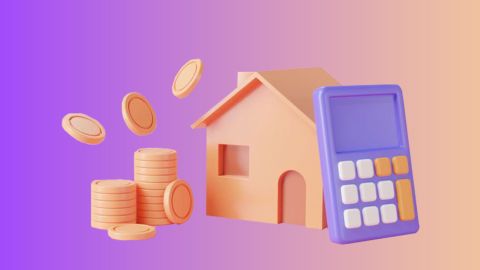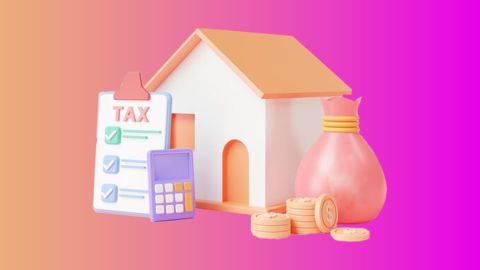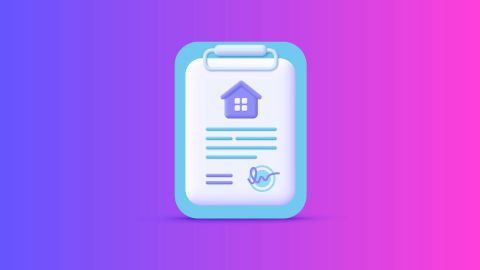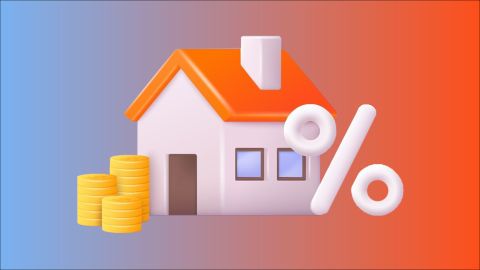Effectively managing finances involves exploring tax-saving avenues, and one such important aspect is understanding House Rent Allowance (HRA). In India, individuals have a plethora of tax-saving options to streamline financial planning and reduce tax liabilities. These include investments in Public Provident Fund (PPF), insurance plans, tax-saving fixed deposits, Equity Linked Savings Schemes (ELSS), National Savings Certificate (NSC), and contributions to the Employee Provident Fund (EPF). Additionally, deductions under Section 80C of the Income Tax Act cover expenses like life insurance premiums and tuition fees.
Furthermore, homeowners can capitalise on their property by leveraging home loans for tax benefits, with principal repayments and interest payments qualifying for deductions under Section 80C and Section 24(b) respectively. This strategic utilisation not only meets housing needs but also results in significant tax savings.
If you are considering homeownership as part of your comprehensive financial strategy, exploring home loan options can provide both a tangible asset and additional tax benefits. Bajaj Finserv offers home loans with competitive interest rates starting from 7.45%* p.a and flexible repayment tenures up to 32 years. Check your home loan eligibility and discover attractive offers tailored to your financial profile. You may already be eligible, find out by entering your mobile number and OTP.
What is HRA (House Rent Allowance)?
House Rent Allowance (HRA) is a salary component provided by an employer to support employees who live in rented accommodation. It helps individuals meet their rental expenses and also provides a tax benefit. The amount of HRA depends on factors such as basic salary, the actual rent paid, and whether the employee lives in a metro or non-metro city. HRA is partially exempt from tax under Section 10(13A) of the Income Tax Act, 1961, subject to certain rules. The exemption amount is calculated by comparing actual HRA received, rent paid minus 10% of salary, and a fixed percentage of salary depending on the city.
Who can avail of HRA?
HRA is only available to people who earn a salary and receive an HRA component as part of their total pay. If you are living in a rented property, you may claim tax benefits on your HRA amount. This exemption helps you lower your taxable income. However, HRA is not available for self-employed individuals or business owners. They cannot claim HRA even if they live in a rented house. If you meet the eligibility, you can enjoy both financial and tax-saving benefits through your HRA.
HRA for the self-employed
Self-employed individuals cannot claim HRA under Section 10(13A). However, they may still receive tax deductions for rent payments through Section 80GG. This section is specifically designed to help those who are not salaried but still pay rent for staying in a rented house or flat.
HRA for salaried individuals
If you are a salaried individual who receives HRA as part of your pay package, you may claim tax exemption under Section 10(13A) and Rule 2A of the Income Tax Act. The exemption depends on your salary, rent paid, and whether your city is categorised as metro or non-metro.
HRA calculation methods
Calculating HRA involves several methods, each with its own set of conditions and considerations. The commonly used methods include:
- Actual HRA received: This method involves calculating the actual amount of HRA received from the employer. The least of the following amounts are considered for deduction: actual HRA received 50% of salary for those residing in metro cities or 40% for non-metro cities, and the excess of rent paid over 10% of salary.
- Rent paid minus 10% of salary: Under this method, the difference between the rent paid and 10% of the salary is considered for HRA deduction. The least of the following amounts are deductible: rent paid minus 10% of salary, actual HRA received, or 50% of salary for metro cities and 40% for non-metro cities.
- 50% of salary: In this method, 50% of the individual's salary is considered for HRA deduction, provided they reside in metro cities. For non-metro cities, the percentage is reduced to 40%.
HRA calculation example
Below is an illustration based on the case of Mr. Chowdhury, who lives in Mumbai and pays Rs.10,000 monthly rent (Rs.1.2 lakh annually).
Components |
Monthly (Rs.) |
Annual (Rs.) |
Basic salary |
30,000 |
3,60,000 |
HRA |
13,000 |
1,56,000 |
Conveyance allowance |
2,000 |
24,000 |
Special allowance |
3,000 |
36,000 |
Leave Travel Allowance (LTA) |
5,000 |
60,000 |
Total earnings |
53,000 |
6,36,000 |
Step-by-step HRA exemption calculation:
- Actual HRA received: Rs.1.56 lakh
- 50% of salary (Basic + DA) as he lives in a metro city: Rs.1.80 lakh
- Rent paid – 10% of salary: Rs.1.2 lakh – Rs.36,000 = Rs.84,000
The exempted HRA will be Rs.84,000, which is the lowest of the above three values.
The balance HRA amount will be taxable as per Mr. Chowdhury’s income tax slab.
While HRA provides excellent tax savings for renters, transitioning to homeownership can offer even greater long-term financial benefits through property appreciation and substantial tax deductions on home loans. With Bajaj Finserv offering amounts up to Rs. 15 Crore* and processing approvals within 48 hours*, you could move from paying rent to building equity in your own property. Check your loan eligibility to explore homeownership opportunities that align with your current rental budget. You may already be eligible, find out by entering your mobile number and OTP.
Eligibility criteria for HRA
To claim HRA benefits, certain eligibility criteria must be met:
- The individual must be a salaried employee receiving HRA as part of their salary package.
- They must pay rent for accommodation where they reside.
- If the rent paid exceeds a certain threshold, the landlord's PAN details must be provided.
- HRA cannot be claimed if the individual resides in a self-owned property.
- Rent receipts and other relevant documents must be maintained as proof of rent paid.
For salaried professionals who are ready to transition from renting to owning, securing a home loan can provide greater financial control and long-term wealth building. Bajaj Finserv offers specialised home loan solutions for salaried individuals with streamlined documentation and competitive rates starting at 7.45%* p.a. Transform your monthly rent payments into EMIs that build equity in your own property. Check your home loan offers to see how affordable homeownership can be for your income level. You may already be eligible, find out by entering your mobile number and OTP.






